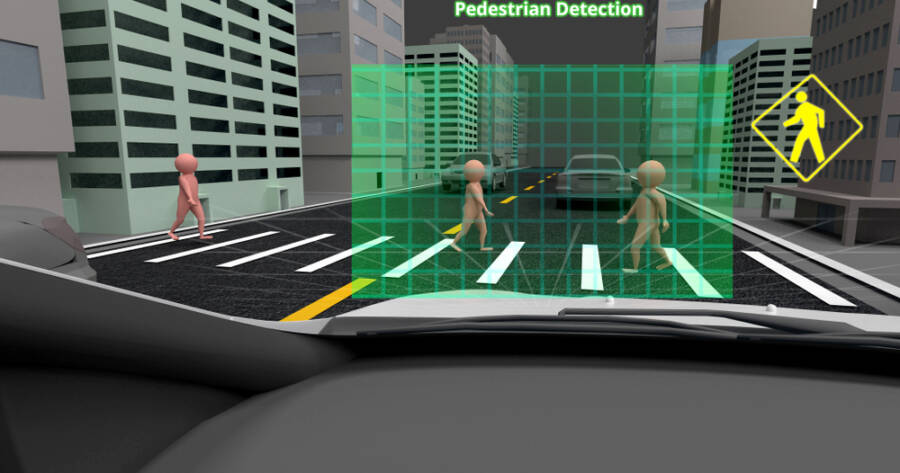Oversized trucks and SUVs pose unique challenges to road safety, particularly for pedestrians. The NHTSA’s proposed rules aim to enhance protection for vulnerable road users in light of these growing concerns. Find out what these new rules mean for you!
What Are the Road Safety Concerns for Oversized Trucks and SUVs?
Oversized trucks and SUVs present significant road safety concerns due to their size and weight, which can lead to more severe accidents compared to smaller vehicles. The increased mass of these vehicles often results in greater stopping distances, making it more challenging for drivers to react in emergency situations. Larger vehicles are more likely to cause fatal injuries to pedestrians and cyclists in collisions, as the impact force is considerably higher. 1 Furthermore, the elevated height of these vehicles can obstruct the driver’s view of smaller road users, increasing the likelihood of accidents.
Moreover, the prevalence of oversized vehicles on the road has been linked to a broader trend of increasing vehicle size in general. This trend raises concerns about the overall safety of roadways, as larger vehicles can dominate the road space and create an intimidating environment for smaller vehicles and pedestrians. As the number of oversized trucks and SUVs continues to rise, addressing these safety concerns becomes increasingly urgent for policymakers and transportation safety advocates.
New NHTSA Rules Regarding Oversized Truck and SUV Road Safety
The National Highway Traffic Safety Administration (NHTSA) has proposed new regulations aimed at improving pedestrian safety in the vicinity of oversized vehicles. 2 These rules are designed to address the unique risks posed by large trucks and SUVs, particularly in urban areas where pedestrian traffic is high. The proposed regulations include requirements for improved visibility features, such as enhanced lighting and design modifications that reduce blind spots for drivers. By mandating these changes, the NHTSA aims to create a safer environment for pedestrians and cyclists who share the road with larger vehicles.
In addition to visibility improvements, the NHTSA’s proposed rules also focus on the implementation of advanced safety technologies. These technologies may include automatic emergency braking systems and pedestrian detection systems, which can significantly reduce the likelihood of accidents involving large vehicles. 3 The integration of such technologies is supported by recent studies that demonstrate their effectiveness in preventing collisions and enhancing overall road safety. By encouraging manufacturers to adopt these innovations, the NHTSA seeks to mitigate the risks associated with oversized vehicles.
The proposed regulations have garnered support from various advocacy groups and safety organizations, which emphasize the need for comprehensive measures to protect vulnerable road users. As cities continue to grow and the number of oversized vehicles on the road increases, the importance of these regulations cannot be overstated. The NHTSA’s proactive approach reflects a commitment to addressing the pressing safety concerns associated with large vehicles and ensuring that all road users can navigate safely.
Key Benefits of Proposed Regulations
The proposed regulations by the NHTSA offer several key benefits aimed at enhancing pedestrian protection from oversized vehicles. One of the primary advantages is the potential reduction in pedestrian fatalities and injuries. By implementing stricter safety standards and encouraging the adoption of advanced technologies, the regulations are expected to create a safer environment for pedestrians, particularly in urban settings where interactions between vehicles and foot traffic are frequent. This proactive approach aligns with broader public health goals to reduce traffic-related injuries and fatalities.
Another significant benefit of the proposed regulations is the promotion of vehicle design changes that prioritize safety. By requiring manufacturers to consider pedestrian safety in their designs, the regulations encourage the development of vehicles that are less likely to cause severe injuries in the event of a collision. This shift in design philosophy can lead to a new generation of vehicles that are not only safer for occupants but also for pedestrians and cyclists, fostering a more inclusive approach to road safety.
Finally, the proposed regulations can serve as a catalyst for broader discussions about transportation safety and urban planning. By highlighting the risks associated with oversized vehicles, these regulations may encourage policymakers to consider additional measures, such as improved infrastructure for pedestrians and cyclists. This holistic approach to road safety can lead to more sustainable and equitable transportation systems that prioritize the safety of all road users, ultimately contributing to healthier communities.
Learn More About Oversized Truck and SUV Road Safety
The new road safety rules for oversized trucks and SUVs aim to protect all road users. By addressing their unique challenges, these regulations push for safer streets and more responsible driving.
For drivers of large vehicles, staying informed and compliant is key to avoiding penalties and ensuring safety. As these changes take effect, everyone benefits from more secure roads, whether you’re behind the wheel of a massive SUV or sharing the road with one.
